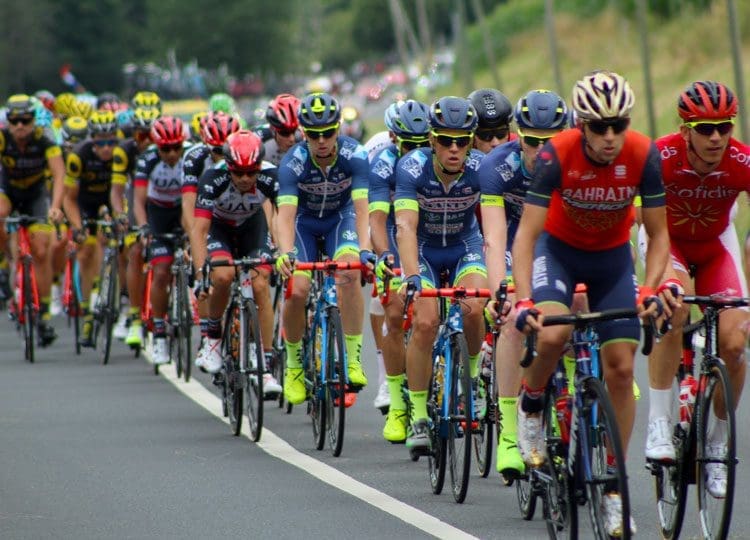Do you want to get into cycling? Or are you already a cyclist looking to improve your performance? Either way, it’s important to know the different types of training that are available to cyclists. Depending on your category (sprint, endurance, etc.), there are certain types of training that will be more effective for you. In this article, we’ll go over the different types of training and how they can benefit cyclists of all levels.
As a cyclist, you must be familiar with the different types of training you need to do to compete at your best. Depending on what category you race in – road, mountain, track, or BMX – the type of training will vary. However, there are some basic types of training that all cyclists should do regardless of category.
Different types of training a cyclist must do depending on the category they race in
If you want to get serious about cycling as a sport, it’s important to understand the different types of training you must do depending on the category you race in. Training for sprints is different from training for long-distance races or criteriums.
Cycling can serve as a weight loss routine, and you can get improved result when combined with a men’s fat burner. Still, cyclists should tailor their workouts according to their riding goals and the category they fall into. For competitive cycling, this may include interval weight training exercises and long weekend rides while casual bikers may want to incorporate lower intensity cardio sessions over shorter bike rides frequently throughout the week.
It’s important to assess your current cycling ability and find appropriate exercises that will enable you to meet your goals safely, progress gradually, and build muscle endurance and strength. Incorporating stretching before and after every session also helps improve flexibility, range of motion, core strength, and overall performance – of which are necessary for any cyclist who wants to maximize their results on the road.
Beginner cyclists should focus on building endurance and strength
As a beginner cyclist, you may feel like you should be out there burning up the trails and logging miles with all the other cycling pros. But don’t be intimidated – the key to successful cycling is a consistent commitment to building your cycling endurance and strength.
This consistency will help you find a regular rhythm and create muscles that are able to control your bike better and guide it through diverse terrains and varying speeds. Start off by taking regular rides of increasing lengths and take note of areas where your legs feel weak or shaky.
Work on building various muscle groups in those areas through stationary exercises; even simple activities, such as lift-offs, can go a long way in increasing strength and stability in your cycling.
Amateur cyclists should focus on interval training to build speed and power
Are you an amateur cyclist hoping to take your performance to the next level? If so, interval training may be the secret sauce for success. Interval sessions can provide a variety of valuable benefits, from improved cardiovascular fitness and muscular strength to increased speed and power.
Through this method of training, bouts of intense physical activity are alternated with periods of rest, allowing for optimal energy delivery to the muscles during each round. For amateur cyclists looking to get an edge over their competition in terms of speed and power output, interval training is the way to go!
Professional cyclists should focus on all of the above, as well as mental training to stay focused during long races
Professional cycling is one of the most physically (and mentally!) demanding sports out there. Not only do cyclists need to stay fit and maintain a healthy diet, they also need to train their bodies for long races and pay attention to their technique.
On top of that, mental training is essential in order for cyclists to stay focused throughout the entire race – this could involve strategies like positive self-talk and visualization techniques. Ultimately, professional cyclists should commit to taking care of the physical aspects as well as focus on developing their mental strength if they want to succeed at the highest level.
No matter what category you fall into, always listen to your body and take rest days when needed! Everyone needs a break, no matter your fitness level or intensity of your workouts.
Category-Based Types of Training
Biking is a popular sport and favorite hobby enjoyed by many people every day. There are four main categories of biking that each bring something different to the table. Road bikes are perfect for long-distance rides, track bikes deliver peak performance on racing tracks, mountain bikes are designed for off-road adventures.
Depending on what type of biking you prefer, there’s sure to be an option that fits best with your personal needs. So whether you’re a competitive cyclist or just getting started in the world of biking, it’s worth exploring all the different categories to find the one that suits you best!
Road Cycling is the Most Common Type of Racing and Trains Cyclists to Ride Long Distances at a Relatively High Speed
Road cycling is a fantastic form of racing that has experienced a surge in popularity lately. It trains cyclists to ride at relatively high speeds over medium to long distances – ideal for getting from point A to point B in a timely manner or for competing against other cyclists for sport.
Road cycling also requires strength and stamina; cyclists must push themselves hard when gearing up for these kinds of races to make it first across the finish line. Whether you’re just out for pleasure or an avid competitor, road cycling will give you a great workout and an unforgettable sense of achievement!
Track Cycling Requires More Explosive Power and Trains Cyclists to Ride Around an Oval-shaped Track
Track cycling is an intense and fun sport that requires more explosive power than regular biking. It’s unique from other cycling disciplines because riders have to ride around an oval-shaped track and make tight turns with great finesse. This kind of riding helps develop explosive power in cyclists which is why many dabble in track cycling for its fast-paced and challenging environment.
Not only does it develop power, but track cyclists can become incredibly precise too, as they have to accurately read the speed of their opponents, predict their actions, and react accordingly. Those who take up this sport will find themselves vying for a spot on the international podium!
Mountain Biking Tests a Cyclist’s Endurance as They Navigate Through Rough Terrain
Mountain biking takes cycling to the next level. It is an intense workout, testing a cyclist’s physical and mental endurance as they bravely make their way along rough terrain. Unlike regular cycling, mountain biking usually involves riding through mud and rocks, making it more challenging to control the bike.
Navigating these difficult trails introduces technical skills many road cyclists don’t have to worry about, such as body positioning, speed control, and using weight shifts to keep balance. All these extra skills mean mountain biking is not only tough but also thrilling; something that any dedicated cyclist should try out!
Now that you know the different types of training a cyclist must do, you can start to plan your own workouts. Depending on the type of cycling you want to pursue, there are different techniques and workouts you’ll need to master. However, all cyclists share one common goal, to be the best they can be. With hard work and dedication, anyone can succeed in the world of competitive cycling.
Photo by Rob Wingate on Unsplash
No products found.

















